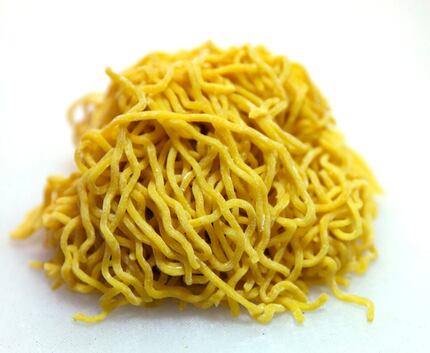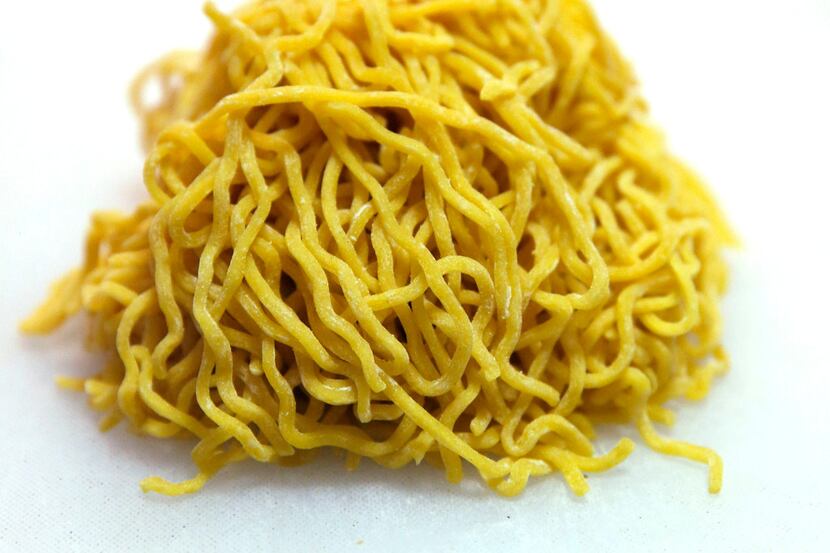Though there are endless interpretations of ramen, these five essential elements define the dish, says George Itoh of Ichigoh Ramen Lounge.
1. Broth
The main types are:
Tonkotsu Milky, rich pork broth
Paitan Milky, rich chicken broth
Chintan Clear, delicate chicken broth
Dashi Made with bonito flakes or kelp, or a combination, and dried shiitakes; often blended with chintan.
Yasai Vegetable broth; it can be clear or thickened with puréed vegetables, tahini or soy milk.
Tomato Made with fresh and dried tomato, blended with meat or veggie broths.
2. Tare
Pronounced tar-ray, these concentrated liquids or pastes flavor the unseasoned broths. "They are the secret recipes of every ramen shop," Itoh says. The ratio of tare to broth is also a guarded secret, but basically, the thicker the soup, the less tare it requires.
The three main types are:
Shoyu tare Made with soy sauce plus seasonings
Shio tare With a lighter, clearer salt base
Miso tare A blend of white, red and brown miso pastes

3. Noodles
Thin or thick, straight, wavy or curly: There are hundreds of variations on ramen noodles, but they are always made of wheat and stabilized with alkaline water or powder, which adds the characteristic springiness.
The shape depends on the style of soup, how rich or oily it is, and other factors. But the goal is always a shape that maximizes the amount of broth brought up with the noodle. The richer the soup, the thinner and straighter the noodle tends to be.
4. Toppings
These are added judiciously. "It's not about how many toppings are on it," Itoh says. "It's about balance and aesthetics. You want to taste and savor everything."
Negi Scallions
Menma Seasoned bamboo shoots
Chashu Tender slice of meat, usually pork or chicken, though the term actually refers to the cooking process of roasting, then braising in soy-based liquid
Nori Dried seaweed, classic in shoyu ramen
Naruto Swirly pink and white fish cake, also traditional in shoyu ramen
Benishoga Pickled red ginger, classic in tonkotsu
Ajitsuke Tamago Soft-cooked egg marinated in soy, sake and salt, or just a salt brine
Onsen Tamago Unseasoned soft-cooked egg, best for complex bowls of tonkotsu or spicy broths
5. Oil
The "most important and most overlooked" component, Itoh says. The proper amount of seasoned oil changes the flavor profile and balances the bowl; too little leaves it bland and light, too much makes it unctuous. The typical oils are:
Seabura Pork back fat, typically for tonkotsu
Mayu Charred garlic with sesame oil
Niboshi Made with sardines, bonito and Spanish mackerel
Chiyu Chicken fat, typically for chintan
Kaori abura Roasted garlic oil

